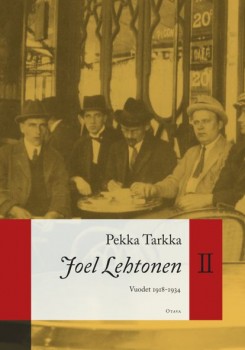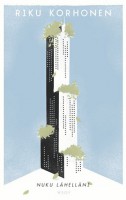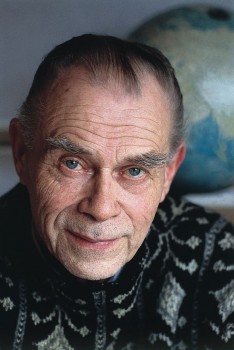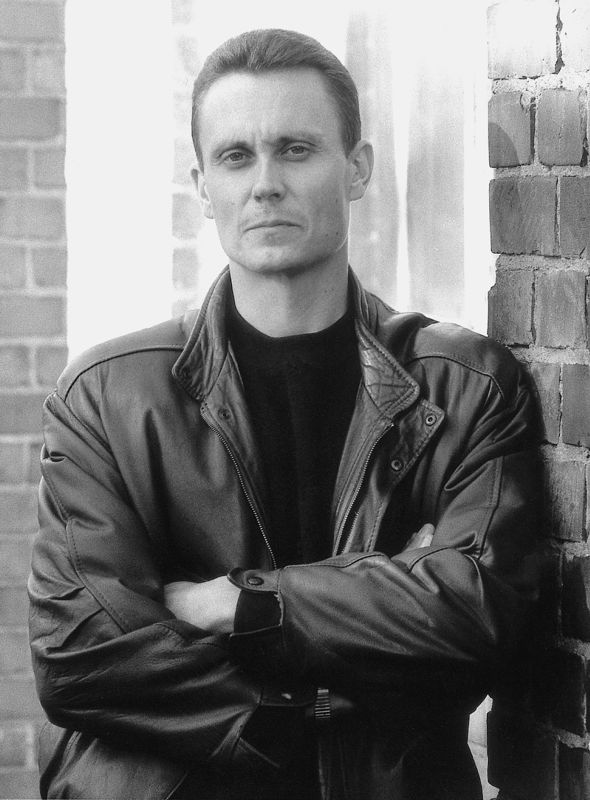Author: Tuomas Juntunen
Happy days, sad days
28 February 2013 | Reviews
 Pekka Tarkka
Pekka Tarkka
Joel Lehtonen II. Vuodet 1918–1934
[Joel Lehtonen II. The years 1918–1934]
Helsinki: Otava, 2012. 591 p., ill.
ISBN 978-951-1-25924-4
€38.50, hardback
A well-meaning bookseller’s idealism, inspired by Tolstoyan ideology, is brought crashing down by the laziness and ingratitude of the man hired to look after his estate: conflicts between the bourgeoisie and the ‘ordinary folk’ are played out in heart of the Finnish lakeside summer idyll in Savo province.
Taking place within a single day, the novel Putkinotko (an invented, onomatopoetic place name: ‘Hogweed Hollow’) is one of the most important classics of Finnish literature. Putkinotko was also the title of a series (1917–1920) of three prose works – two novels and a collection of short stories – sharing many of the same characters [here, a translation of ‘A happy day’ from Kuolleet omenapuut, ‘Dead apple trees’, 1918] .
In 1905 Joel Lehtonen bought a farmstead in Savo which he named Putkinotko: it became the place of inspiration for his writing. With an output that is both extensive and somewhat uneven, the reputation of Joel Lehtonen (1881–1934) rests largely on the merits of his Putkinotko, written between 1917 and 1920. More…
Riku Korhonen: Nuku lähelläni [Sleep close to me]
28 February 2013 | Mini reviews, Reviews
 Nuku lähelläni
Nuku lähelläni
[Sleep close to me]
Helsinki: WSOY, 2012. 300 p.
ISBN 978-951-0-39305-5
€29.90, hardback
Contrary to the more agreeable expectations that might be prompted by its title, this book is dominated by the image of a masked anarchist raising his hand in a cloud of teargas. Korhonen (born 1972) is an analyst of social problems who in his most recent novels has expanded his field of vision from the realities of suburban Finland to the global centres of money and power. This novel, his fifth book, offers a pessimistic picture of Europe today. The collapse of the economy has left people with an inner sense of emptiness and anger. A young man travels to a central European financial centre to collect his brother’s corpse. The dead man had a management level job in banking, but his body is discovered with an anti- globalisation protest mask on its face. Analysis of the world situation is combined with elements of a detective thriller. The novel’s love affair is likened to a business deal: capital, profit and risk are equated with desire, hope and sorrow. This anti-capitalist metaphor is a typical theme of contemporary Finnish prose fiction.
Translated by David McDuff
Out of the body
13 January 2011 | Reviews

Veikko Huovinen. Photo: Irmeli Jung
‘Where will you be spending your eternity?’ ‘A spot of transmigration’, a short story by Veikko Huovinen (1927–2009), immediately confronts its main character, a man named Leevi Sytky, with this ultimate question.
Behind it is the sense of sin and fear of damnation typical of the religious life of northern Finland. Anyone who has made it as far as this final short story of Huovinen’s 1973 collection, Rasvamaksa (‘Fatty liver’) will, however, not make the mistake of taking the question too seriously; something diverting is clearly once again on offer.
Soon Leevi Sytky takes his leave of life in slightly sinful circumstances, but in the hereafter it turns out that these are not looked upon with disapproval. More…



